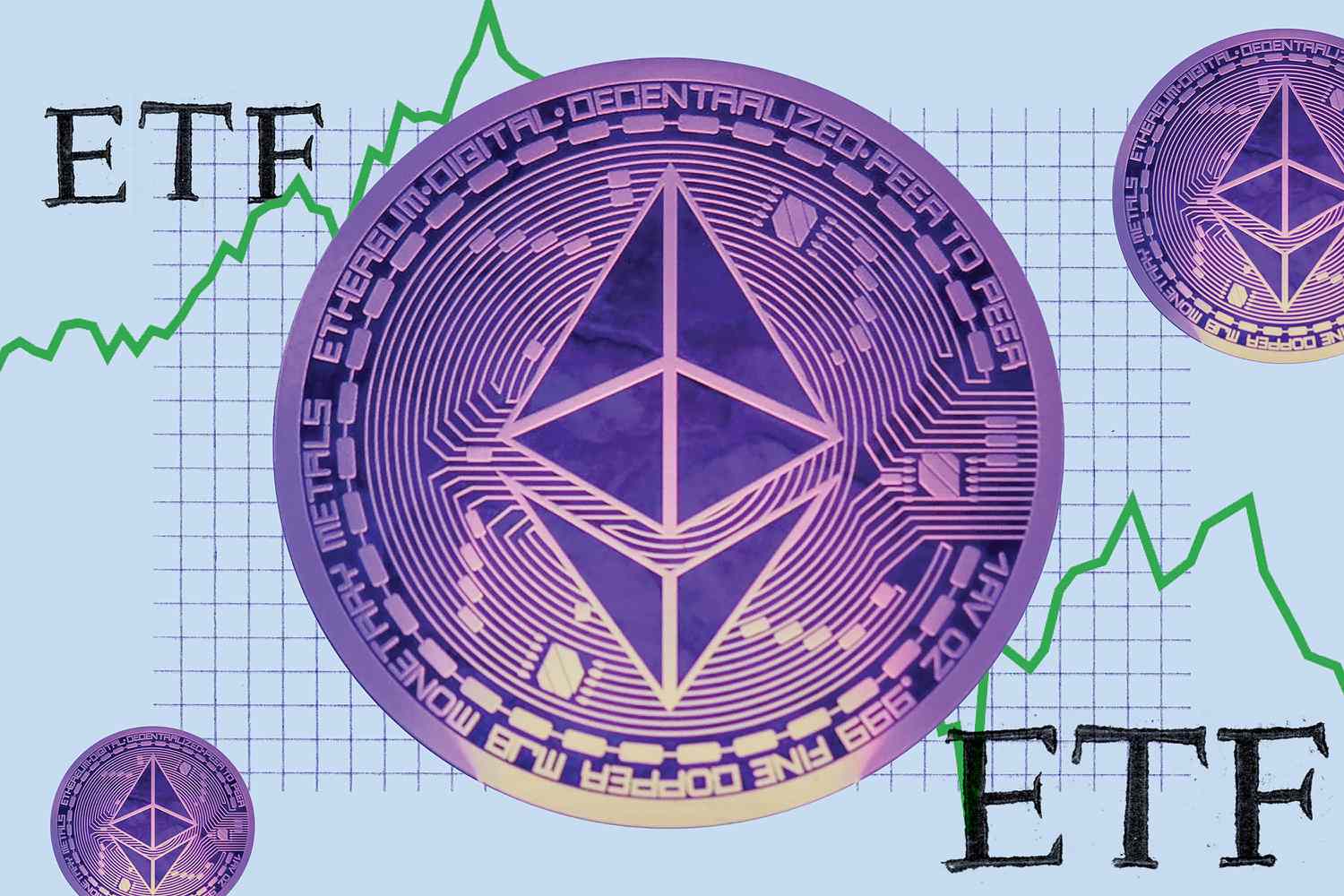1. What are Cryptocurrency ETFs?
.jpg)
A cryptocurrency ETF is a fund that allows investors to buy shares of the fund, which in turn holds digital currencies or cryptocurrency-related assets. These ETFs can be structured in two main ways:
-
Spot ETFs: These ETFs directly hold cryptocurrencies such as Bitcoin or Ethereum. The performance of the fund closely follows the price of the digital assets it contains.
-
Futures ETFs: These ETFs invest in cryptocurrency futures contracts, which are agreements to buy or sell cryptocurrencies at a predetermined price at a future date. The value of the ETF is based on the performance of these contracts rather than the spot price of the underlying assets.
2. How do Cryptocurrency ETFs work?'

Most traditional ETFs track the performance of a specific index by holding a diversified set of assets. Similarly, crypto ETFs track the price of cryptocurrencies through either direct holdings (spot ETFs) or derivatives (futures ETFs). The ProShares Bitcoin Strategy ETF, the first U.S. crypto ETF approved in 2021, for example, uses Bitcoin futures to track the price of Bitcoin.
These ETFs trade on conventional exchanges like the New York Stock Exchange, which makes them accessible to both retail and institutional investors without requiring direct involvement in the cryptocurrency markets. Spot ETFs directly hold the cryptocurrency, so their value mirrors the price of the digital assets. On the other hand, futures ETFs depend on Bitcoin futures contracts, which introduce additional complexities and risks, such as tracking errors and rollover costs.
3. Advantages of Cryptocurrency ETFs

-
Exposure Without Ownership: The primary advantage of cryptocurrency ETFs is that they allow investors to gain exposure to cryptocurrencies without the need to buy and store digital assets directly. This can save investors from dealing with the complexities of securing wallets, paying transaction fees, and managing private keys.
-
Regulation and Security: Since cryptocurrency ETFs are traded on traditional stock exchanges, they are subject to the same regulations as other securities. This provides a level of oversight and security that is not present in the largely unregulated world of cryptocurrency exchanges.
-
Liquidity: As ETFs are listed on stock exchanges, they provide high liquidity. Investors can buy and sell shares throughout the trading day, just like regular stocks, making it easier to enter or exit a position compared to trading cryptocurrencies on decentralized exchanges.
-
Diversification: Some crypto ETFs offer exposure to a basket of digital assets rather than just one cryptocurrency, which can help mitigate risk. For example, some ETFs track a combination of Bitcoin, Ethereum, and other cryptocurrencies, providing more diversified exposure to the overall crypto market.
-
Lower Learning Curve: For traditional investors, understanding the mechanics of cryptocurrency can be intimidating. By investing in a cryptocurrency ETF, investors can gain exposure to the digital asset market without needing to navigate the complexities of blockchain technology, wallets, or exchanges.
4. Disadvantages of Cryptocurrency ETFs

-
Higher Fees: One significant downside of crypto ETFs is that they tend to have higher fees than traditional ETFs. Managing cryptocurrency assets, particularly futures contracts, requires more active management, which translates to higher expense ratios. For example, the ProShares Bitcoin Strategy ETF has an expense ratio of 0.95%, significantly higher than the 0.09% fee for the SPDR S&P 500 ETF.
-
Volatility: Cryptocurrencies are known for their extreme volatility, and cryptocurrency ETFs are no exception. While ETFs offer a way to gain exposure to the crypto market, they still carry the risk of large price swings, which may not be suitable for all investors, especially those with a low risk tolerance.
-
Tracking Errors: Particularly for futures-based ETFs, there is a risk of tracking errors. Since the price of futures contracts may not perfectly track the price of the underlying asset (such as Bitcoin), the performance of the ETF could diverge from the asset's actual price.
-
Lack of Direct Ownership: Investors in cryptocurrency ETFs do not own the underlying digital assets themselves. This means they miss out on certain benefits of owning cryptocurrencies directly, such as staking rewards or full control over the assets.
5. The Regulatory Landscape

One of the main reasons cryptocurrency ETFs took so long to gain approval in the United States was regulatory concerns. The SEC was initially hesitant to approve these products due to concerns about market manipulation, fraud, and the lack of investor protections in the cryptocurrency markets.
In 2024, however, the SEC approved the first spot crypto ETFs after years of regulatory scrutiny. This was a significant milestone in the evolution of cryptocurrency investment products. Despite the approval, regulatory oversight remains a challenge. Unlike traditional financial markets, the crypto market is less regulated, which leaves room for fraudulent activity and market manipulation.
6. Alternatives to Cryptocurrency ETFs
.jpg)
If you’re interested in gaining exposure to cryptocurrencies but are wary of cryptocurrency ETFs, there are other alternatives worth considering:
-
Crypto Trusts: Investment vehicles like Bitcoin Investment Trusts offer a way to gain exposure to Bitcoin, but unlike ETFs, they are not traded on public exchanges and may have restrictions on who can invest.
-
Crypto ETPs (Exchange-Traded Products): These are similar to ETFs but may not be registered under the same regulations, making them less secure for investors.
-
Companies Holding Crypto: Some publicly traded companies, such as MicroStrategy and Tesla, hold large amounts of cryptocurrencies on their balance sheets. Investing in these companies provides indirect exposure to digital assets.
Conclusion
Cryptocurrency ETFs are a powerful tool for traditional investors who want exposure to the fast-growing world of digital currencies without the complexities of direct ownership. While they offer significant advantages, such as liquidity, lower learning curves, and regulation, they also come with higher fees, volatility, and tracking risks. The regulatory landscape for these products is still evolving, which adds an element of uncertainty to the market.
Before investing in cryptocurrency ETFs, it’s essential to understand both the benefits and risks involved. As always, speaking with a financial advisor can help you assess whether these products align with your investment goals and risk tolerance
Read More:

 English
English Tiếng Việt
Tiếng Việt.png)











.jpg)




